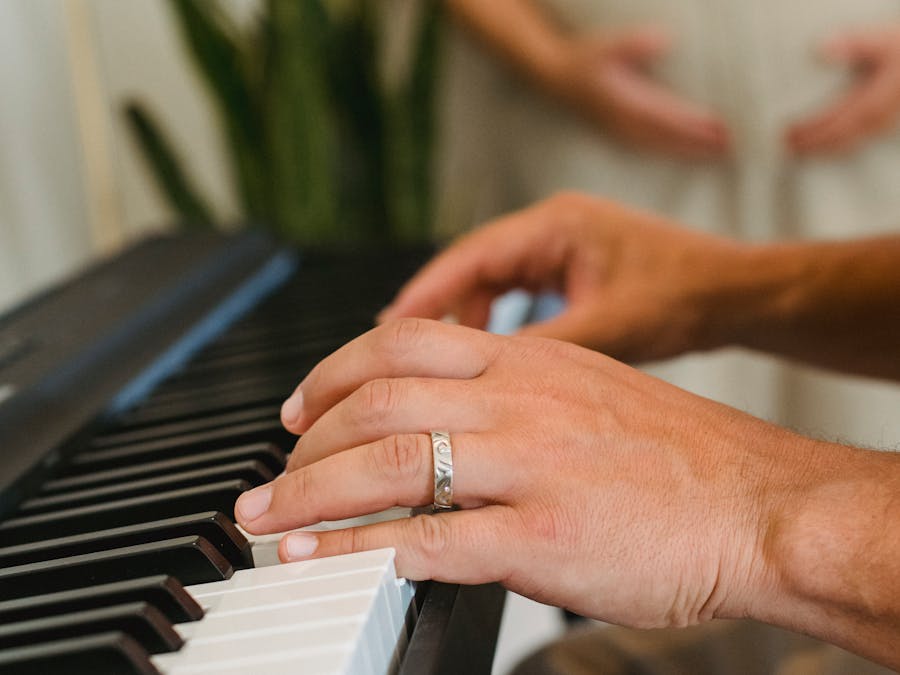 Piano Guidance
Piano Guidance
 Piano Guidance
Piano Guidance

 Photo: Andrea Piacquadio
Photo: Andrea Piacquadio
A lead sheet is the written form of the jazz piano language, consisting of one staff only, in treble clef, a single melody, and chord symbols. Being able to read a lead sheet makes learning new pieces fast and easy, and sight-reading a snap.

A full size piano or full set of keys refers to a piano (acoustic or digital) with 88 notes. Many piano teachers will recommend the fully-weighted...
Read More »
Actually, there are TWO ideal times to tune a piano! The first one in the year is in spring, and yes, this means that the best time to tune a piano...
Read More »
Pianoforall is one of the most popular online piano courses online and has helped over 450,000 students around the world achieve their dream of playing beautiful piano for over a decade.
Learn More »A lead sheet is the written form of the jazz piano language, consisting of one staff only, in treble clef, a single melody, and chord symbols. Being able to read a lead sheet makes learning new pieces fast and easy, and sight-reading a snap. The challenge, however, is that unless you have written the lead sheet yourself, no lead sheet is trustworthy. It is extremely rare that a lead sheet you find in a book or on the internet has been written by the composer him/herself. At best, at lead sheet is one person’s interpretation of the given song, and at worst it is riddled with mistakes. Not to worry - our online jazz piano teachers can show you the keys to identifying the flaws in a lead sheet, as well as how to interpret a lead sheet with intelligence and style. For the jazz pianist, there are three essential things that we must translate from the lead sheet to the piano: The melody: Generally played with the right hand, in the high range of the piano (or by any other instrument when playing in a jazz band), the melody consists of the notes within the treble clef staff. We play all of the pitches as marked, but can change the rhythm and phrasing as we see fit. The bass notes: The first part of each chord symbol - in the example above, B-flat, B, C, C-sharp - indicates the root of the chord. This is our bass note, played with our left hand in the low range of the piano (or by a bassist if playing in a jazz band). The most common styles for playing bass notes are the “walking bass”, with four notes played per bar in 4/4 time, and playing “in two”, with two notes played per bar. The bass is a time-keeper, like the drums, and the main bass notes occur where indicated, on beat 1, or beats 1 and 3 as the case may be. The chords: The rest of the chord symbol tells us which notes to play in the mid-range of the piano, between the bass notes and the melody. In the example above, the lack of a suffix after the B-flat indicates that it’s a major chord, the o7 after the B indicates a diminished chord, the m7 indicates minor-seventh, etc. We cannot, however play simple triads and seventh-chords, and must elaborate on the chord symbols given, adding 9ths, 11ths, and 13ths, where appropriate. The next challenge lies in playing this third part, the chords, when our two hands are already occupied by melody and bass. There are a few different choices: we can play the chord notes with the upper fingers of our left hand, the lowers fingers of our right hand, a combination of both, or we can jump our hands quickly between bass notes and chords (sometimes called “stride piano”), or between melody and chords. As you can see, there are a lot of options. Your online jazz piano teacher can help you make sense of lead sheets, and how to apply them!

Head of key painted with nail polish to make it easy to find. To make it easy to find the most used keys on your key ring: Color Code Key Head:...
Read More »
The Proto-Human language (also Proto-Sapiens, Proto-World) is the hypothetical direct genetic predecessor of all the world's spoken languages. It...
Read More »
Pianoforall is one of the most popular online piano courses online and has helped over 450,000 students around the world achieve their dream of playing beautiful piano for over a decade.
Learn More »Just be honest, tell her you don't think things are going to work for you. Tutors know different students want different things, so she'll understand if you don't think her teaching style will work for you. Just be honest, tell her you don't think things are going to work for you.

Two pentatonic scales common to jazz are the major pentatonic scale and the minor pentatonic scale. They are both modes of one another. The major...
Read More »
The highest piano Grade is 8. It requires very high technical skills, and the ability to play the instrument with the use of proper skills and...
Read More »
After a brief overview of the keyboard, simple rhythms are usually taught. The quarter and half notes generally show up during the first lesson and...
Read More »
What causes tears when we're angry? The most immediate reason for angry tears is probably that you feel hurt, embarrassed, betrayed, or unjustly...
Read More »